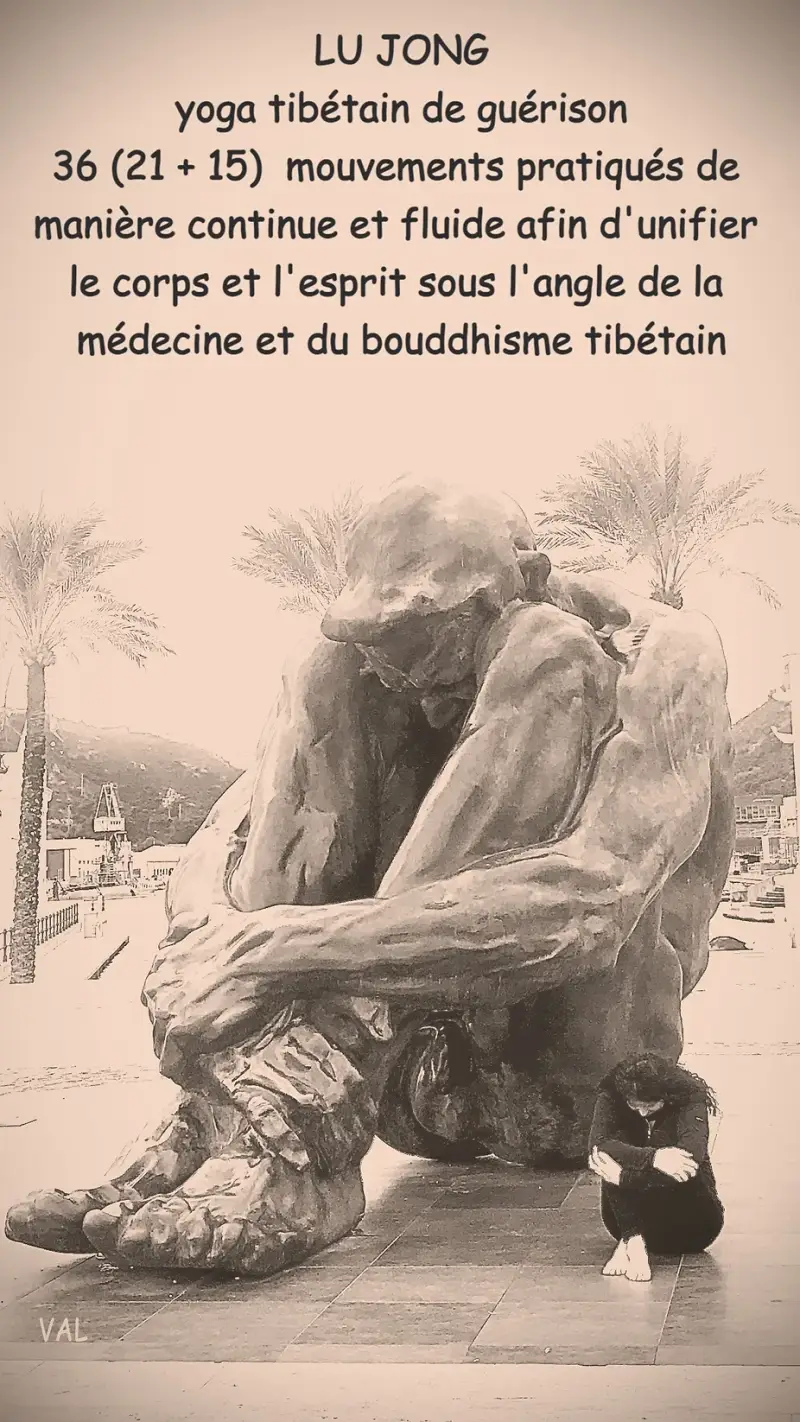We all suffer from our fluctuating mental states (happiness, sadness, joy, distress, calm, anger, etc.), and we all seek to develop lasting happiness, lasting joy—not only for our own well-being, but of course for the benefit of all beings, since we are all deeply interconnected.


What is the purpose of engaging in a path of inner transformation or personal development?
Our lack of inner emotional stability can, according to Tibetan Buddhism, be repaired through study, reflection, and meditation—whoever we are, of course. This is not about religion, but about learning to observe our behaviors and to implement actions and antidotes that create new habits. These habits, in turn, generate results that gradually distance us from the sufferings in which we have always unconsciously been immersed.
Lu Jong and Tog Chöd are two Buddhist yogic practices whose aim, like that of all yoga in its original sense, is a process of inner transformation.
Two 100% Buddhist Meditative Practices
This inner transformation unfolds through meditation, which requires two components:
-
stabilization of the mind, that is, a calm and clear mind
-
the cultivation of certain qualities
Stabilization of the mind is achieved through meditative techniques of one-pointed concentration.
The qualities to be developed are compassion, altruism, equanimity, and joy.
The practices of Lu Jong and Tog Chöd meet both of these aspects, and it is this complementarity that makes them powerful.
A Complementarity of Method and Wisdom
Focusing the mind on one point is not easy; it requires regular, repetitive training, which is often difficult to integrate into our busy lives.
Developing the required qualities calls for hearing the teachings, in order to understand how our minds tend to lean toward actions that ultimately only generate more suffering.
Tog Chöd supports this process of concentration by engaging the mind on a meditation object while performing various movements. This “meditation in action” makes it easier to establish the placement of the mind. Moreover, the movements themselves are ancestral, originating in the Tibetan tradition of monastic dances. They carry the wisdom of body-mind union and effectively activate energy circulation within the body—even for someone elderly, practicing slowly.
Lu Jong works on the opening of the heart to develop these essential Buddhist qualities. Its movements come from the pre-Buddhist Tibetan Bön tradition, the tradition of Buddha Shakyamuni, and Tibetan Buddhist medical tradition. Their principle is to activate the flow of energy and open the channels, enabling body-mind union. Lu Jong is classified among the “external Tummo” practices, with Tummo being a profound inner practice that rapidly opens energy blockages and thus frees the individual from preconceived ideas.
We can therefore see how these two practices are complementary, representing the aspects of method and wisdom on the Buddhist path—one working on Bodhicitta, the opening of the heart, and the other on mental clarity and calm.
Meditative Practices
Each session follows the three parts of a Buddhist meditation: introduction, session, and conclusion.
-
In the introduction, listening to the Dharma awakens understanding and establishes motivation.
-
The practice itself works on the winds (channels) of the subtle body to stimulate the inseparability of body and mind and to encourage effective reflection, which is carried into the meditation at the end of the session.
-
The conclusion is where we meditate in order to apply the teaching we have heard. This meditation is supported by the circulation of energy (winds) in the channels generated by the practice, enabling us to engage more deeply with the object of meditation through a calmer, more stable mind. This depth of meditation more easily brings about insight and realization.
Ideal for Buddhists and Non-Buddhists Alike
Tog Chöd and Lu Jong are truly essential practices for anyone who wishes to:
-
deepen their Buddhist meditation without any conflict with their existing tradition or lineage,
-
enter a path of inner transformation.
They are also highly beneficial for anyone simply wishing to develop:
-
physical and mental well-being
-
the ability to let go
-
self-confidence
-
concentration
-
overall health improvements (greater joint flexibility, enhanced sensations of strength)
Do Not Fall into the Third Laziness!
Above all, do not fall into the third type of laziness—the laziness of discouragement—which consists of saying: “I’m not capable of this.”
These practices are open to everyone!
For Lu Jong, we seek to develop:
-
flexibility of the mind, not of the limbs
-
inner strength, not bulging muscles
-
emotional balance, not headstands!
For Tog Chöd, we seek to train the mind—which means the body practices in dependence on its possibilities.
And finally, if you’re still hesitating…
-
the younger ones will go all out, with big jumps and dynamic movements
-
the older ones will go gently, inwardly, serenely


Ajouter un commentaire
Commentaires